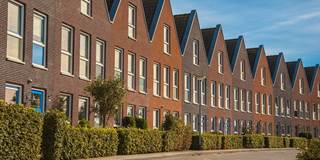From the anchoring role in society of the middle class to the agility and resilience of mid-size firms, the middle has long been regarded as consistent with both individual and collective wellbeing. Yet, in recent years, the middle has become less stable, less predictable, and more elusive.
LONDON – There was a time when many regarded being in the middle of the distribution – socially, politically, and in the business world – as a favorable, stabilizing, and desirable outcome. From the anchoring role in society of the middle class to the agility and resilience of mid-size firms, the middle was seen as consistent with both individual and collective wellbeing. Yet, in recent years, the middle has become less stable, less predictable, and more elusive, and its primacy – in economics, politics, business, asset management, and even sports – has become increasingly unsustainable.
Driven by structural changes, as well as lagging business and policy responses, the middle has been eroded – or is at risk – almost everywhere you look. Should this trend continue – which is subject to some debate – the implications would be far-reaching.
For decades, a rising median household income in advanced economies anchored the growth of a middle class that often opted for the political center. Together with stable and trusted institutions, the middle class acted as a stabilizer for a more prosperous society. In business, too, an environment in which mid-size firms flourished was viewed as desirable, because it reconciled small firms’ lack of balance-sheet strength with their larger counterparts’ tendency to slip into oligopolistic complacency.

LONDON – There was a time when many regarded being in the middle of the distribution – socially, politically, and in the business world – as a favorable, stabilizing, and desirable outcome. From the anchoring role in society of the middle class to the agility and resilience of mid-size firms, the middle was seen as consistent with both individual and collective wellbeing. Yet, in recent years, the middle has become less stable, less predictable, and more elusive, and its primacy – in economics, politics, business, asset management, and even sports – has become increasingly unsustainable.
Driven by structural changes, as well as lagging business and policy responses, the middle has been eroded – or is at risk – almost everywhere you look. Should this trend continue – which is subject to some debate – the implications would be far-reaching.
For decades, a rising median household income in advanced economies anchored the growth of a middle class that often opted for the political center. Together with stable and trusted institutions, the middle class acted as a stabilizer for a more prosperous society. In business, too, an environment in which mid-size firms flourished was viewed as desirable, because it reconciled small firms’ lack of balance-sheet strength with their larger counterparts’ tendency to slip into oligopolistic complacency.